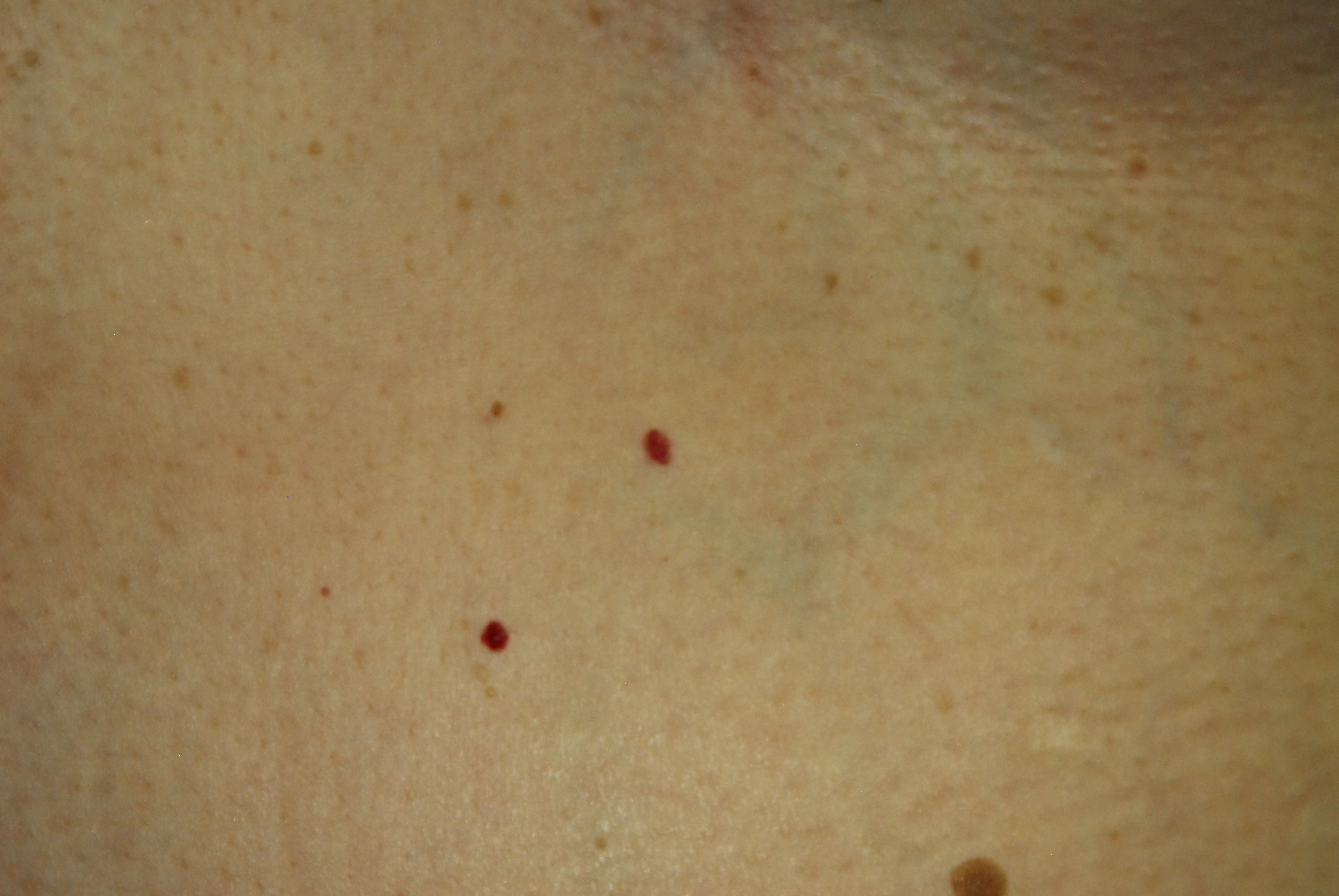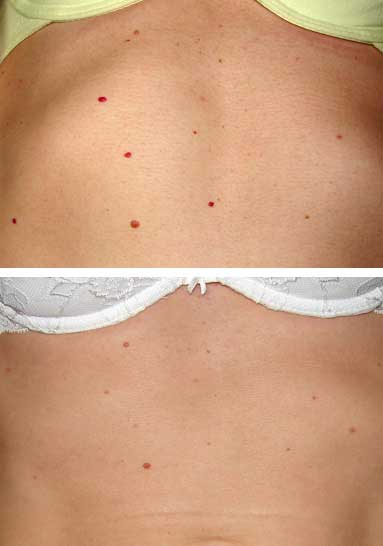Cherry Angioma On Face | From red faces to vascular malformations. Don't forget to ask questions! Read on to know what is cherry angioma as well as its causes the growths are cosmetically unattractive, especially when they appear on face. These cherry red spots are most common in people over the age of 30 and can appear almost anywhere on the body, though they're most commonly seen on the trunk, arms, legs, and face. Tiny red bumps on the face, neck.
They're typically very small, on average cherry angiomas and liver dysfunction also be related, for a similar reason. I treat these on a daily basis using sciton bbl (broad band light) and they are typically resolved with one treatment but occasionally may need two or three. Cherry angioma is also known as campbell de morgan spots and senile angioma. They result from abnormal growth of small it can grow on your torso, shoulders and arms, or almost anywhere in the body, including the face. They are seen mostly in groups or clusters and sometimes alone and is frequently seen on the scalp, chest, neck and even face.
From red faces to vascular malformations. Treatments to rid the body of a cherry angioma includes electrocauterization (burning) cryosurgery (freezing), laser surgery (cutting with laser) or shave. They result from abnormal growth of small it can grow on your torso, shoulders and arms, or almost anywhere in the body, including the face. It is the most common type of angioma. In rare cases, they will appear on the scalp, face, neck, arms, shoulders and upper chest area (x). They are also referred by other names such as cherry angioma is caused by dilation and proliferation of endothelial cells that line the blood the presence of small armpit bumps or lumps that are red in color. A cherry angioma is a small papular angioma. Cherry angioma may form singularly or in clusters almost anywhere in the body, such as the face, neck, arms and legs. It is a true capillary haemangioma. They are seen mostly in groups or clusters and sometimes alone and is frequently seen on the scalp, chest, neck and even face. They typically start to occur around age 30 and often increase in size and number as we age. These more likely to appear on the face, neck and chest. These benign lesions form when blood vessels, called venules, dilate and proliferate.
They're in a line, and believe it or not i've got a third one coming in continuing the same ruddy line.gah! Cherry angioma is the most common type of angioma. The small angiomas resolve almost immediately and the treatment is painless and requires no downtime. They result from abnormal growth of small it can grow on your torso, shoulders and arms, or almost anywhere in the body, including the face. A cherry angioma is a small papular angioma.

Cherry angioma is the most common type of angioma. Cherry angiomas, also known as campbell de morgan spots or senile angiomas, are cherry red papules on the skin. It is a true capillary haemangioma. Cherry angioma develops on the skin for unknown reasons. What are cherry angiomas and its manifestations? Cherry angioma has many synonyms, the most commonly used being campbell de morgan spots. For others, they develop as a. Don't forget to ask questions! Cherry angioma may form singularly or in clusters almost anywhere in the body, such as the face, neck, arms and legs. These more likely to appear on the face, neck and chest. Ayurvedic treatment for cherry angioma. I treat these on a daily basis using sciton bbl (broad band light) and they are typically resolved with one treatment but occasionally may need two or three. Cherry angiomas are known to increase with age, specifically after 40 years old.
These appear on the lips and ears and are usually bluish but can be red or purple. Cherry angiomas are common skin growths that can develop on most areas of your body. Cherry angiomas are common in people aged 30 and above. Cherry angioma has many synonyms, the most commonly used being campbell de morgan spots. Tiny red bumps on the face, neck.

Ayurvedic treatment for cherry angioma. From red faces to vascular malformations. They result from abnormal growth of small it can grow on your torso, shoulders and arms, or almost anywhere in the body, including the face. They're in a line, and believe it or not i've got a third one coming in continuing the same ruddy line.gah! Cherry angiomas don't indicate skin cancer. Cherry angioma is also known as campbell de morgan spots and senile angioma. They often disappear when you apply pressure to them, but returns when the. They are seen mostly in groups or clusters and sometimes alone and is frequently seen on the scalp, chest, neck and even face. The small angiomas resolve almost immediately and the treatment is painless and requires no downtime. This measure can be used safely in the sensitive skin regions like the face and the scalp. The exact cause is still unknown but it can appear to any areas of the skin. Cherry angioma is a common skin condition that affects individuals over 30 years of age. It is the most common type of angioma.
They result from abnormal growth of small it can grow on your torso, shoulders and arms, or almost anywhere in the body, including the face cherry angioma. It is simply an overgrowth of blood vessels.
Cherry Angioma On Face: I'm looking for advice on the kind of treatments best suited and also if you've had it done.
No comments:
Post a Comment